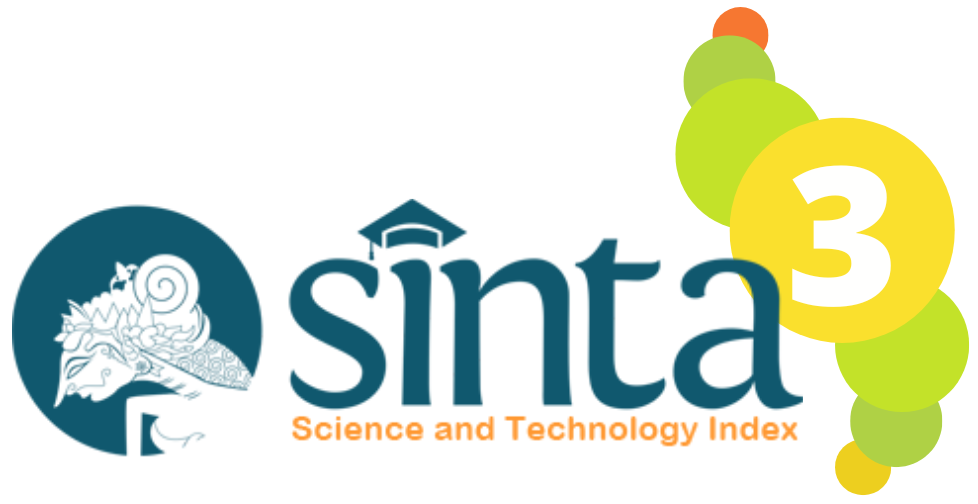The Influence of Wind Direction and Speed on Rainfall in Bengkulu City (2019-2023) Based on the Schmidt-Fergusson and Wind Rose Models
DOI:
10.29303/jpft.v11i1.8749Published:
2025-06-04Issue:
Vol. 11 No. 1 (2025): January-JuneKeywords:
Wind, Rainfall, Wind Rose, Schmidt-Fergusson Model, Bengkulu CityArticles
Downloads
How to Cite
Downloads
Metrics
Abstract
Increasingly extreme climate change has increased rainfall intensity and uncertainty of weather patterns in many parts of Indonesia, including Bengkulu City. This phenomenon affects rainfall patterns, the duration of the wet and dry seasons, and wind speed, all of which have an impact on various aspects of life. This study analyzes the effect of wind direction and speed on rainfall in Bengkulu City using the Schmidt-Fergusson, Wind Rose, and Multiple Linear Regression models, based on data from the Fatmawati Soekarno Bengkulu Meteorological Station in 2019-2023. The results of this study indicate that the dominant wind direction comes from the north, northeast, and southeast, with an average speed of 2.47 m/s, categorized as a weak wind according to the Beaufort scale. The highest annual rainfall was recorded in October 2022 at 600 mm. Based on the Schmidt-Fergusson classification, Bengkulu City is included in climate type A with a Q value = 0.1. Regression analysis shows that wind speed has a significant negative effect on rainfall indicating that wind speed has a negative effect, meaning that an increase in wind speed will cause a decrease in rainfall, while humidity has a positive effect, indicating that when air humidity increases, rainfall will also increase. The R² value of 32.7% indicates that the wind, temperature, pressure, and humidity variables explain some of the variation in rainfall. This finding emphasizes the importance of monitoring wind elements in the early warning system for extreme weather and supports hydrometeorological disaster risk mitigation planning in coastal areas vulnerable to climate change.
References
Angkotasan, M. A., Bemba, J., Tawari, R. H., & Natih, N. M. (2024). Hydro-oceanographic features of North Maluku archipelagic waters in January and July 2021. Jurnal Sains Akuatik Indonesia, 8(3), 269. https://doi.org/10.46252/jsai-fpik-unipa.2024.vol.8.no.3.269 DOI: https://doi.org/10.46252/jsai-fpik-unipa.2024.Vol.8.No.3.392
Faisol, A., Paga, B. O., & Edowai, D. N. (2022). Schmidt–Ferguson climate zone update through utilization of Climate Hazards Group Infrared Precipitation With Stations data to support agricultural development in West Papua Province. Proceedings of the National Seminar on Agricultural Development and Vocational Education, 3(1), 546–556. https://doi.org/10.47687/snppvp.v3i1.338 DOI: https://doi.org/10.47687/snppvp.v3i1.338
Febrianty, D., Permana, M. A. B., & Pratama, A. P. (2023). Testing of rainfall data and surface air pressure from parallel observations from automatic and conventional instruments at the Banten Climatology Station. Journal of Climatology, 4, 34–42.
Fiola, E., Yulius, F., Mutia Risani, D., Alvionita, M., & Dwi Irawati, F. (n.d.). Variable selection method in linear regression modeling of rainfall data in Lampung Province. National Seminar on Data Science, 2024.
Firrizqi, I., Ilahi, N., Kajian, D., Arah, P., Permukaan, A., Tinggi, S., & Sekolah, G. (2023). Comparative study of surface wind direction on weather and climate elements in coastal and highland areas (case study: Soekarno-Hatta Meteorological Station and Citeko Meteorological Station). Journal of Science and Physics Education, 19, 1–12.
Gunasti, A., Wicaksana, K. A., Putri, T. G., Rozikin, A., Ridha, M., & Putra, A. (2024). Comparison of wind data using the Windrose method in Probolinggo City and Banyuwangi City with Independent Sample T-Test. Jurnal Climate and Environmental Research, 8(1). http://ojs.uma.ac.id/index.php/jcebt DOI: https://doi.org/10.31289/jcebt.v8i1.10958
Kahar, F. P., Abidin, K., & Ilham, R. (2024). Analysis of rainfall intensity levels, air pressure and air temperature in the Paotere Makassar area during the period of 2022. Journal of Physical Science, 4.
Nur, I. T., Ullum, H., Fitria, A., & Widodo, W. (2024). Variation of El Niño–Southern Oscillation (ENSO) data analysis results on global climate. Journal of Global Climate, 2.
Purify, A., Teknik Elektronika Pertahanan, P., Militer, A., Kusman, A., Widodo, S., & Silitonga, F. (2024). Climate change and national security risks: A study of Indonesia's defense preparedness. Journal of National Security, 12(1). DOI: https://doi.org/10.63824/jtep.v12i1.251
Rakhmawati, G. (2024). Analysis of rainfall intensity and IDF (Intensity-Duration-Frequency) curve of Mononobe method in Salatiga City. Journal of Engineering Science, 3(3). https://salatigakota.bps.go.id/id DOI: https://doi.org/10.56127/juit.v3i3.1641
Rifai, A., Rochaddi, B., Fadika, U., Marwoto, J., & Setiyono, H. (2020). Study of the influence of monsoon winds on the distribution of sea surface temperatures (case study: Pangandaran Waters, West Java). Indonesian Journal of Oceanography, 2(1), 98–104. https://doi.org/10.14710/ijoce.v2i1.7499 DOI: https://doi.org/10.14710/ijoce.v2i1.7499
Simbolon, C. D. L., Ruhiat, Y., & Saefullah, A. (2022). Analysis of Wind Direction and Speed on Rainfall Distribution in Tangerang Regency. Journal of Physics Theory and Applications, 10(01), 113–114. DOI: https://doi.org/10.23960/jtaf.v10i1.2914
Simbolon, M. (2023). Analisis Pengaruh Variabel Penduga Cuaca Ekstrem di Kota Bengkulu dengan Menggunakan Statistical Product and Service Solutions (SPSS). Newton-Maxwell Journal of Physics, 4(2), 48–55. https://doi.org/10.33369/nmj.v4i2.24926 DOI: https://doi.org/10.33369/nmj.v4i2.24926
Ummah, M. S. (2022). Annual report: Atmospheric dynamics in Indonesia. Sustainability (Switzerland), 11(1), 1–14. Retrieved from http://scioteca.caf.com/bitstream/handle/123456789/1091/red2017-eng-8ene.pdf?sequence=12&isallowed=y
Wahyuni, M. (2024). Rainfall analysis and climate type classification using Schmidt-Ferguson method (case study: Lake Tempe). Civil Engineering Media Journal, 2.
Zhao, L., Wang, C., Jiang, Y., & Xu, J. (2024). Research on the characteristics of wind speed, wind direction, and wind profile based on ERA5 reanalysis data. Aerospace Traffic and Safety, 1(2–4), 131–140. https://doi.org/10.1016/j.aets.2024.12.007 DOI: https://doi.org/10.1016/j.aets.2024.12.007
Author Biographies
Rika Amelia Agustin, University of Bengkulu
Riska Ekawita, University of Bengkulu
Physics Study Program
Supiyati Supiyati, University of Bengkulu
Physics Study Program
Andre Alfando, Meteorology, Climatology and Geophysics Agency
Meteorology, Climatology and Geophysics Agency
License
Copyright (c) 2025 Rika Amelia Agustin, Riska Ekawita, Supiyati Supiyati, Andre Alfando

This work is licensed under a Creative Commons Attribution-ShareAlike 4.0 International License.
Authors who publish with Jurnal Pendidikan Fisika dan Teknologi (JPFT) agree to the following terms:
- Authors retain copyright and grant the journal right of first publication with the work simultaneously licensed under a Creative Commons Attribution License 4.0 International License (CC-BY-SA License). This license allows authors to use all articles, data sets, graphics, and appendices in data mining applications, search engines, web sites, blogs, and other platforms by providing an appropriate reference. The journal allows the author(s) to hold the copyright without restrictions and will retain publishing rights without restrictions.
- Authors are able to enter into separate, additional contractual arrangements for the non-exclusive distribution of the journal's published version of the work (e.g., post it to an institutional repository or publish it in a book), with an acknowledgement of its initial publication in Jurnal Pendidikan Fisika dan Teknologi (JPFT).
- Authors are permitted and encouraged to post their work online (e.g., in institutional repositories or on their website) prior to and during the submission process, as it can lead to productive exchanges, as well as earlier and greater citation of published work (See The Effect of Open Access).










